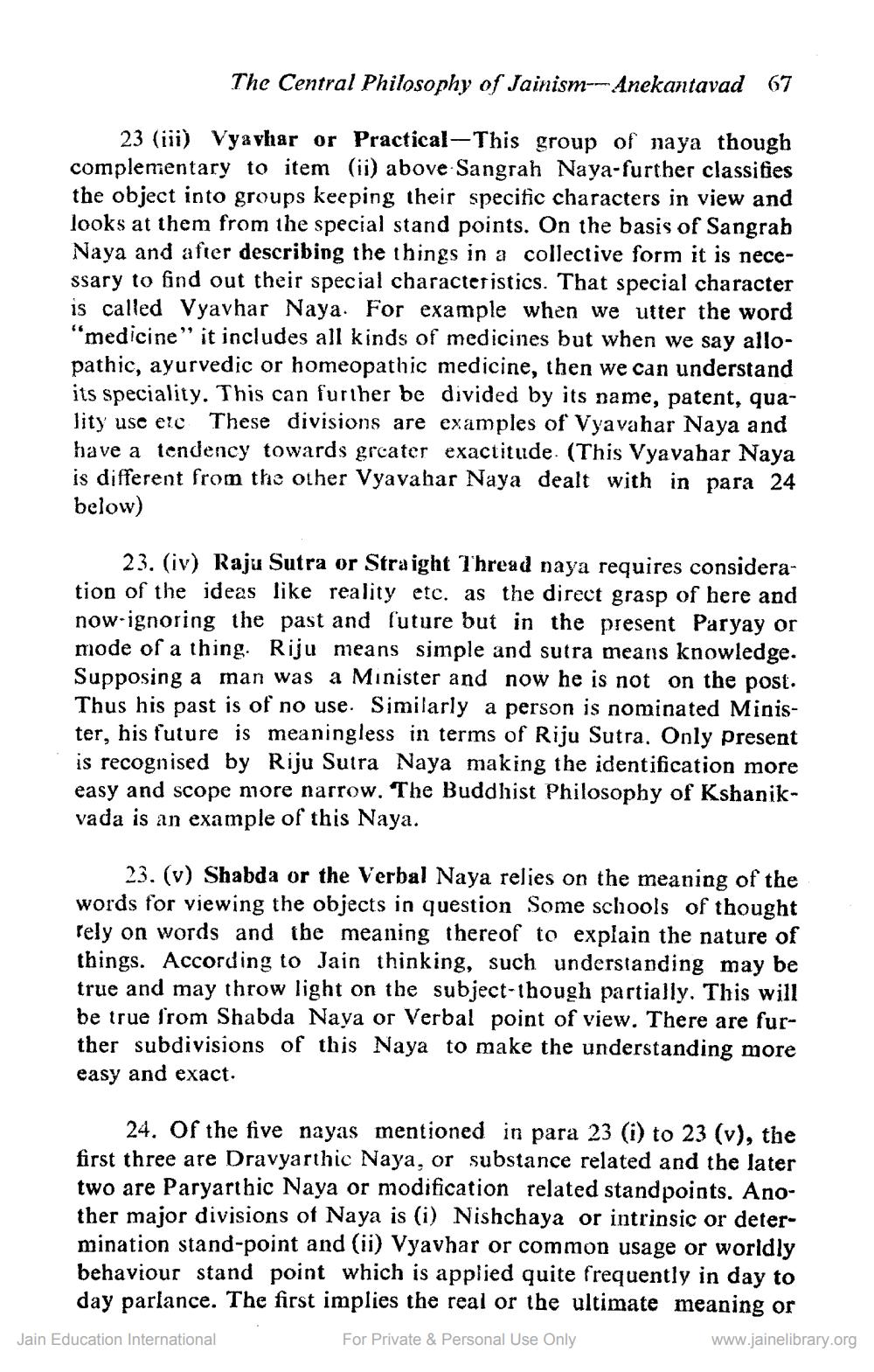________________
The Central Philosophy of Jainism-Anekantavad 67
23 (iii) Vyavhar or Practical-This group of naya though complementary to item (ii) above Sangrah Naya-further classifies the object into groups keeping their specific characters in view and looks at them from the special stand points. On the basis of Sangrah Naya and after describing the things in a collective form it is necessary to find out their special characteristics. That special character is called Vyavhar Naya. For example when we utter the word "medicine" it includes all kinds of medicines but when we say allopathic, ayurvedic or homeopathic medicine, then we can understand its speciality. This can further be divided by its name, patent, quality use etc These divisions are examples of Vyavahar Naya and have a tendency towards greater exactitude. (This Vyavahar Naya is different from the other Vyavahar Naya dealt with in para 24 below)
23. (iv) Raju Sutra or Straight Thread naya requires consideration of the ideas like reality etc. as the direct grasp of here and now-ignoring the past and future but in the present Paryay or mode of a thing. Riju means simple and sutra means knowledge. Supposing a man was a Minister and now he is not on the post. Thus his past is of no use. Similarly a person is nominated Minister, his future is meaningless in terms of Riju Sutra. Only present is recognised by Riju Sutra Naya making the identification more easy and scope more narrow. The Buddhist Philosophy of Kshanikvada is an example of this Naya.
23. (v) Shabda or the Verbal Naya relies on the meaning of the words for viewing the objects in question Some schools of thought rely on words and the meaning thereof to explain the nature of things. According to Jain thinking, such understanding may be true and may throw light on the subject-though partially. This will be true from Shabda Naya or Verbal point of view. There are further subdivisions of this Naya to make the understanding more easy and exact.
24. Of the five nayas mentioned in para 23 (i) to 23 (v), the first three are Dravyarthic Naya, or substance related and the later two are Paryarthic Naya or modification related standpoints. Another major divisions of Naya is (i) Nishchaya or intrinsic or determination stand-point and (ii) Vyavhar or common usage or worldly behaviour stand point which is applied quite frequently in day to day parlance. The first implies the real or the ultimate meaning or
Jain Education International
For Private & Personal Use Only
www.jainelibrary.org




